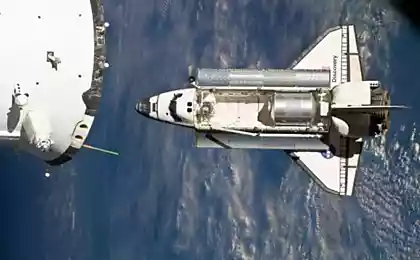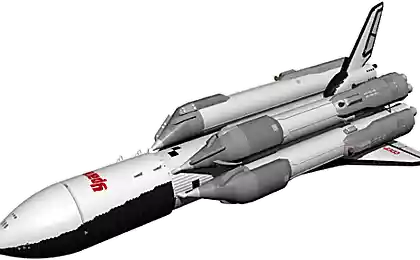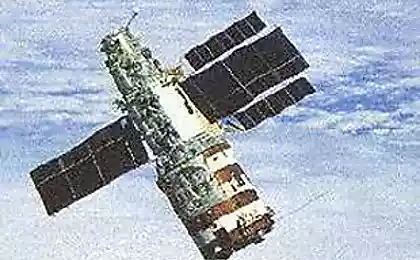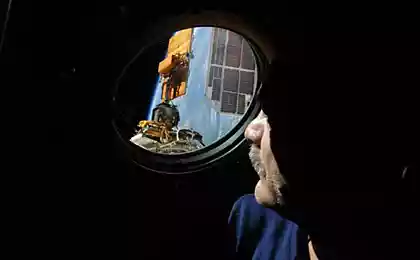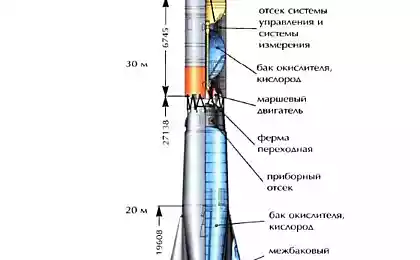715
The ships of deep space communication
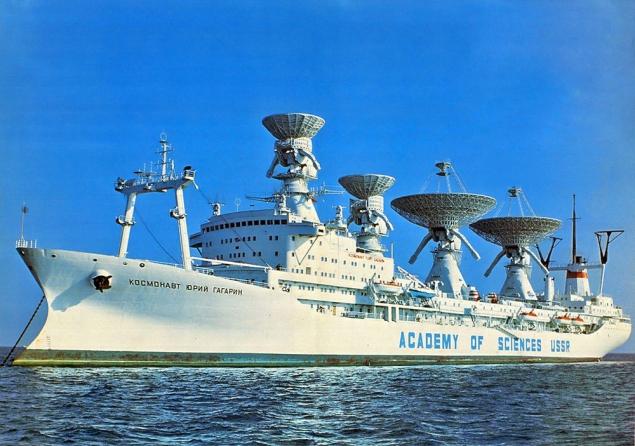
Seeing the title, you might think that it will be about space ships, travelling to distant objects in the Solar system, but today we will talk about the Navy, which became part of the space program.
Ships measuring complex provided the mission control manned spacecraft and orbital stations, communication with the crew and satellites, trajectory and telemetry measurements, participated in the testing of ballistic missiles.
17 research vessels worked in the space research Service of the Department of marine expeditionary work of the Academy of Sciences of the USSR. The Navy participated in all the most significant events of the space program of the USSR, and even partially lived up to our days. Yes, these ships are almost gone, but the technology is the use of ships measuring complex is not outdated and is still valid.
The creation of the space fleet
By the end of the 1950s in the Soviet Union built 13 ground measurement stations, which controlled the test-firing of Intercontinental ballistic missiles and flights of the first satellites. They could completely control the "basic start — up on site, but was "blind" during the "second launch" when I joined the upper stage and the spacecraft were displayed on the desired trajectory.
In addition, to "see" the spacecraft in orbit was possible only at the time when he was over Soviet territory. The country had no private Islands, no leased areas in the other hemisphere, and to control the second start interplanetary space stations, the only comfortable place was considered to be the area of the North Atlantic.
In 1959 Sergey Korolev proposed to use the ships to communicate with the spacecraft and control their flight. In the near future was to be held the first launches to Venus and Mars, which demanded to develop the project ships measuring complex (CFC) in the shortest possible time.
Instead of building a KICK from scratch (they didn't have time to build in time), telemetry equipment have built several bulk carriers. By may 1959, the three ships acquired an unusual appearance: uneven, the superstructure with three stable positions, two powerful P-shaped mast with antennas radio engineering and telemetry stations.
In time, the conversion was completed. The expedition left Sibir, Suchan, and Sakhalin — the first naval command-measuring points.
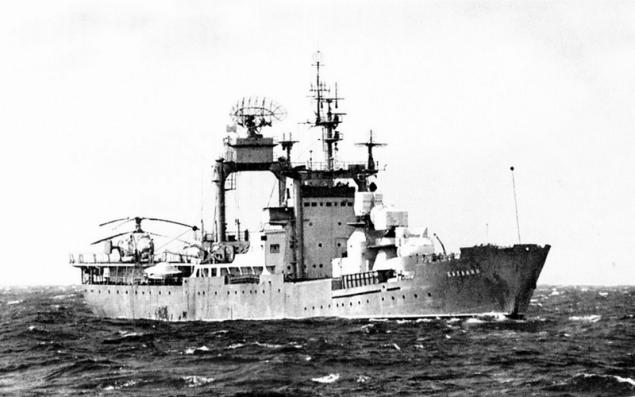
"Sakhalin"
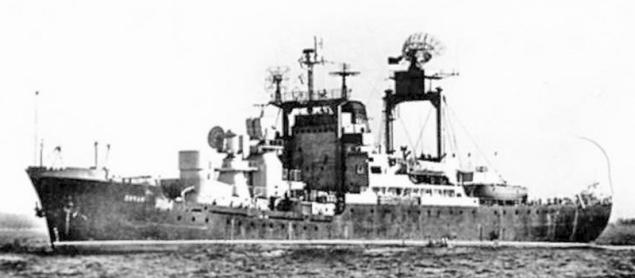
Suchan
At the beginning of 1960 in the Pacific ocean they took part in the tests of Intercontinental ballistic missiles. In 1961, these vessels are already serving the first space flight around the Earth with man on Board.
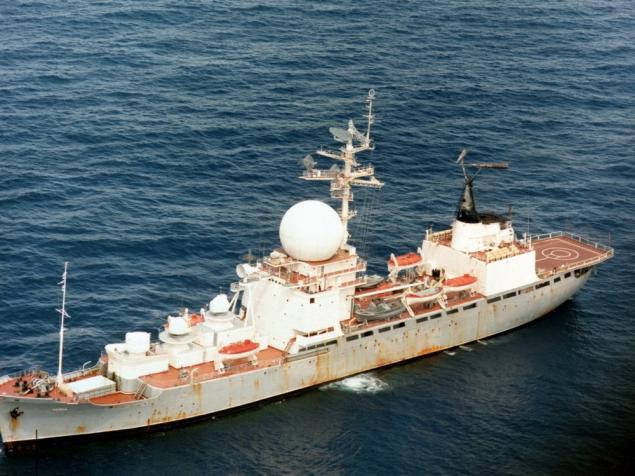
"Chazhma"
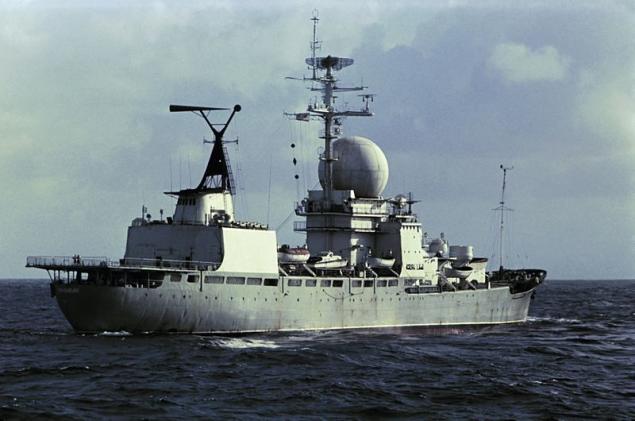
"Chumikan"
In 1963, the Navy added the ship "Chumikan and Chazhma". However, just to converted freighters was not enough. The ship of space communication could not remain an ordinary ship, albeit converted — it had to solve many specific problems. How to place in the vessel different types of radio stations so as not to cause mutual interference? Where to find so much energy to power new technology, which places special requirements on the parameters of the current? All these issues were resolved with the construction of a new class of ships.
In 1967 was built "Cosmonaut Vladimir Komarov", "Borovichi", "Nevel", Kegostrov, "Moreover", and he transferred to the space fleet of the USSR Academy of Sciences.
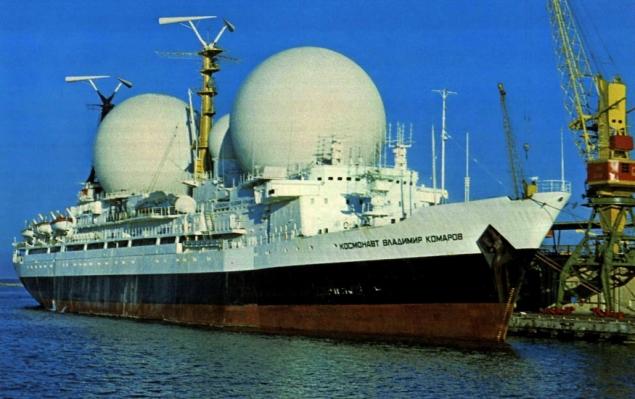
"Cosmonaut Vladimir Komarov"
Source
"Cosmonaut Vladimir Komarov" in nearly 22 years of operation made expedition 27 flight, lasting from one to eleven months, during which time it was passed around 700,000 nautical miles, which is about 13 years "clean" navigation
Then was built a few ships "Cosmonaut Vladislav Volkov", "Cosmonaut Georgy Dobrovolsky, Cosmonaut Pavel Belyayev", "Cosmonaut Viktor Patsaev". In 1979, the composition of the Maritime space complex comprised 11 ships. All of them before the collapse of the Soviet Union participated in space programs.
In the 80-ies in the composition of the fleet entered the new ships are "Marshal Nedelin and Marshal Krylov".
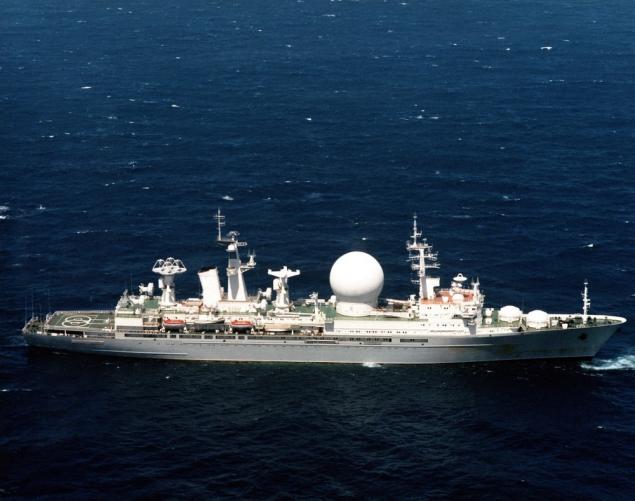
"Marshal Nedelin" in 1985
Source
Another giant — 200 meters long, a displacement of 24 300 tons, the crew — 396. "Marshal Nedelin" examined the areas of landing of the spacecraft, looking for warheads for their evacuation or destruction. It can be used for marine search and rescue operations.
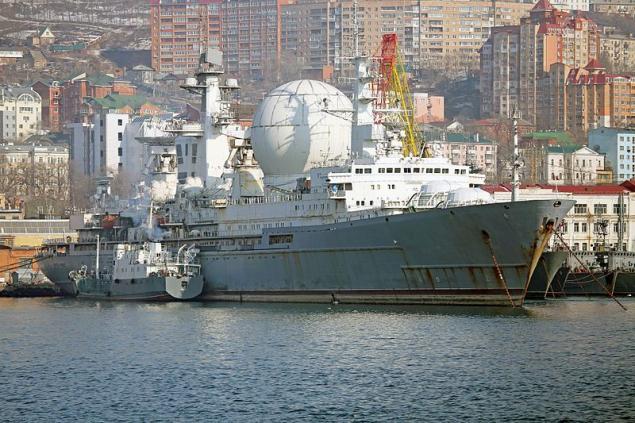
Source
Built in 1987, the "Marshal Krylov" to date remains the only current ship measuring complex.
Second stage: the flagships
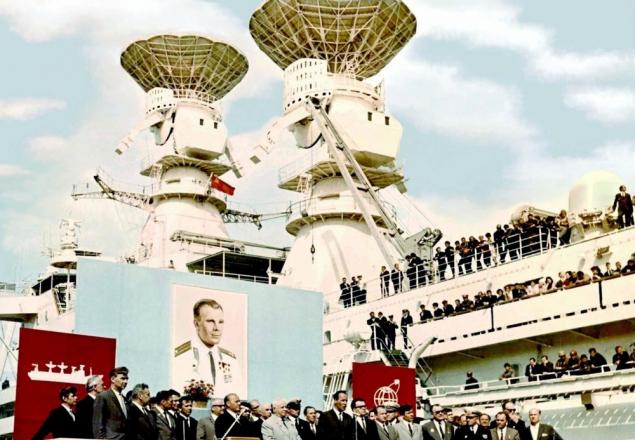
Source
In the late 1960-ies the super powers have launched a race for supremacy in the landing of the astronauts on the lunar surface. The research ships had to lead the entire flight of astronauts and to monitor the landing on the moon. To tackle this challenge was a fundamentally new and unique ships, embodying all the most advanced technologies: "Academician Sergei Korolev and Cosmonaut Yuri Gagarin". The vessel had the highest seaworthy and could go anywhere in the world ocean.
"Akademik Sergei Korolev"
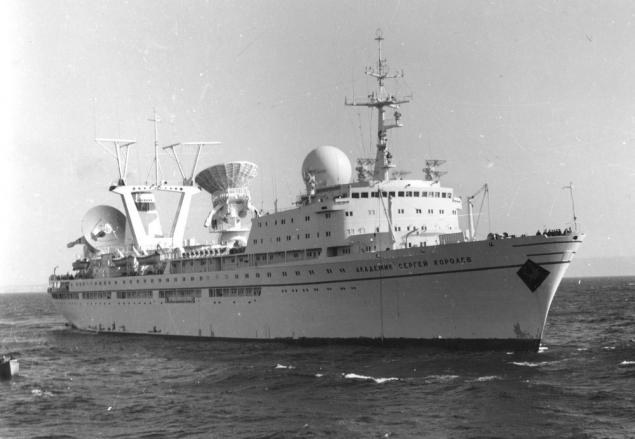
The 180-metre vessel with a displacement of 22 tons and power plant with a capacity of 12 000 HP For this ship for the first time all the measuring equipment was manufactured in the Maritime version (has been fully protected from exposure to moisture).
On the ship "Academician Sergey Korolev" (ASC) housed the equipment, allowing to perform all the functions of the ground mission control. Ask first in the world managed to achieve simultaneous two-way communication and control of space objects at a distance of 400 thousand kilometers in two frequency bands.
On the ship simultaneously and comfortably could accommodate more than 300 people the crew and scientific expedition. The level of comfort of ask was no different from a large cruise ship, but it was equipped with different specific equipment. So, the ship was installed a pulper, which was to destroy the materials of the secret archives of the ship in case of capture of the vessel.
In the first expedition the ship went out on March 18 1971 and for the entire term of service was performed in a total of twenty-two expeditions, the duration of 6-7 months (sometimes up to ten months).
"Cosmonaut Yuri Gagarin"
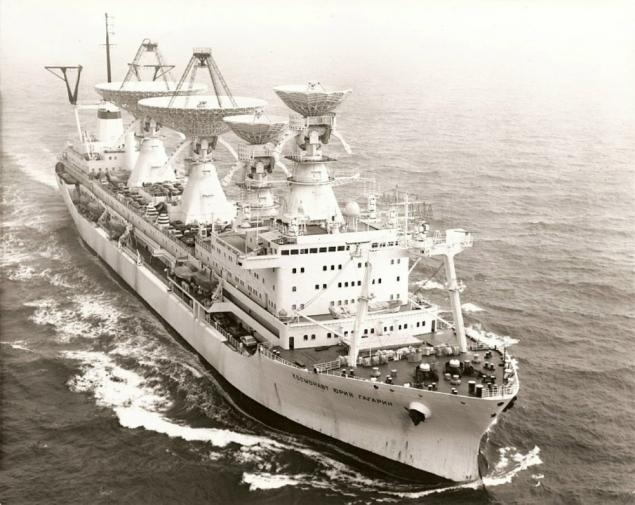
The top is shipbuilding, the flagship of the space fleet and the largest for its time (and perhaps currently) a research vessel built in 1971 at the shipyards of Leningrad.
"Cosmonaut Yuri Gagarin" (KUG) had a capacity of 1250 premises a total area of 20,000 square meters. In length is 236 meters, height — 64, width — 32 meters. On the preserved photographs of the ship rarely seen next to other objects, and to estimate its size difficult, but you can compare the figures: KUG displacement of 45,000 tons, trehsotmetrovoy of the aircraft carrier "Admiral Kuznetsov" — 43 000 tons, "Titanic" — 28 000 tonnes.
"Cosmonaut Yuri Gagarin" was equipped with complex technical systems, allows you to perform with any spacecraft of the entire scope of work, available to any fixed scientific measurement. In the event of a nuclear attack on the Center of space communication, KUG would be able to provide communication and control of space objects in the country.
Such performance was achieved due to the powerful transmitter and sensitive receivers with parametric amplifiers, obladavshimi liquid helium produced right there on the ship. All on Board were 75 antennas. All command and measuring tools operators controlled centrally by two powerful computers.
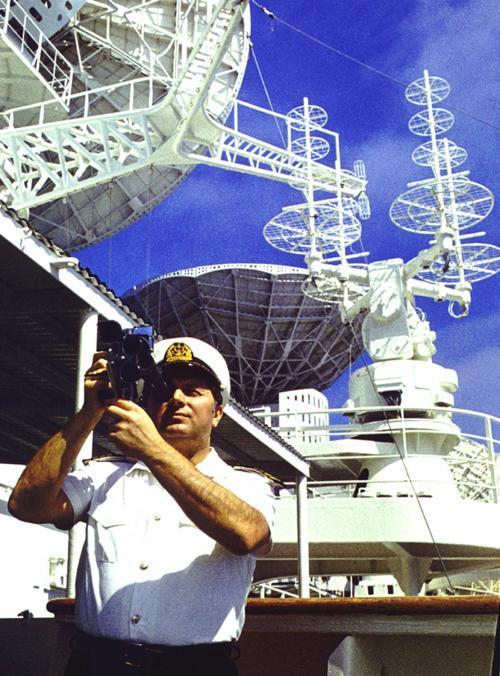
Source
Mirror transmitting / receiving antennas, rotating in three planes, had diameters of 12 and 25 m and weighed 180 and 240 MT respectively. The total weight of all four main antennas along with a platform on which they were installed, amounted to 1,000 tons.
KUG could work simultaneously with two space objects — was used for the multifunctional radio complex "Photon". For relations with Moscow were used relay satellites "Lightning".

Source
Since antenna worked highly directional, it was necessary not only to bring the ship to a given point, but to hold it in place during pitching. The problem with the resistance occurred because of the antennas, whose diameter ranged from 12 to 25 meters with a total area of 1200 m2. If the antenna were placed on the rib, they turned to sail.
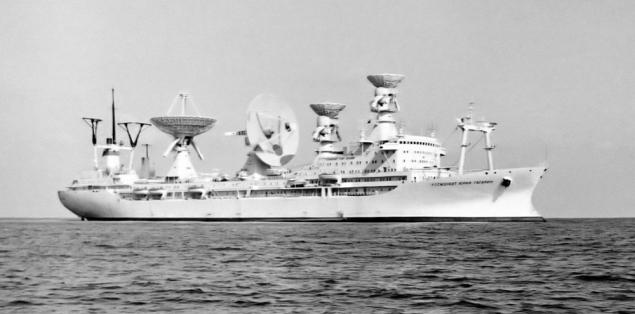
Source
To hold the boat in place, installed a passive damper, by which the amplitude when rolling in terms of a seven-point wave of the sea decreased from 10 to 3 degrees. In addition, inside the housing was installed thruster — vane propulsion: 2 at bow and 1 at stern. They provided the ship great maneuverability. The sessions were carried out at a wind speed of 20 m/sec and sea up to 7 points.
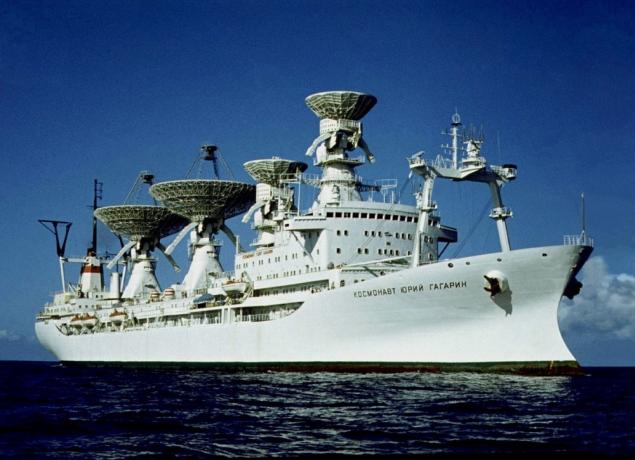
The ship could serve in all areas of the World ocean, including polar, but in practice, in the Arctic ocean were not used. From 1971 to 1991, the ship complied expedition 20 flight in the Atlantic ocean.
Touch on the internal structure of the ship — it was impressive not only technical equipment, but also conditions for work and rest of the crew and scientific team. All laboratories 86 and 210 cabins had air conditioning. On Board was a cinema hall for 250 seats, a gym, three swimming pools, a relaxation area with billiard room. A comfortable environment was to provide the work of hundreds of people over 130 days until the ship sailed into offline mode.
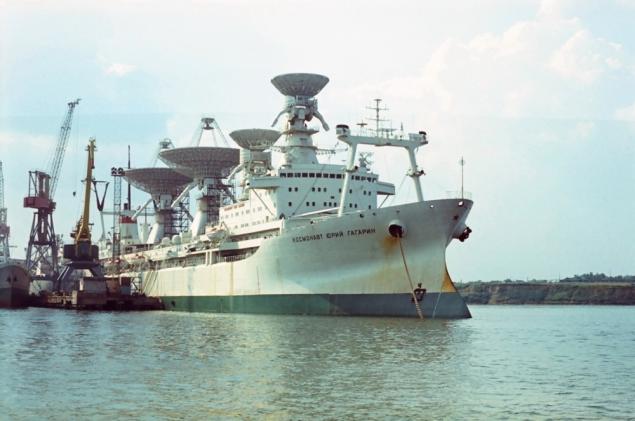
KUG in Sukhyi Lyman. Summer 1978
Source
Shore of the dead
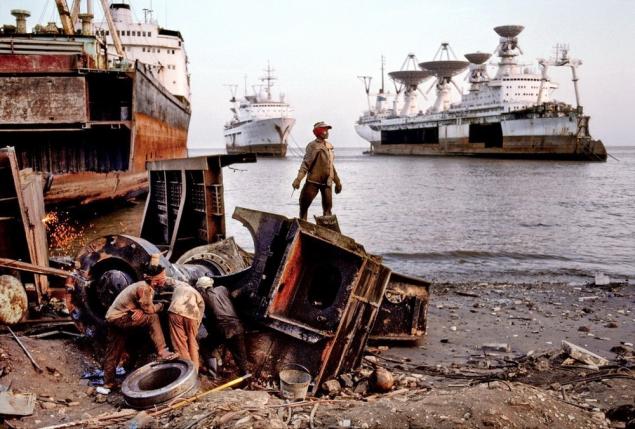
"Cosmonaut Yuri Gagarin" arrived in Alang
In 2016 from the Soviet space fleet left two of the ship "Marshal Krylov" and "Cosmonaut Victor Patsaev".
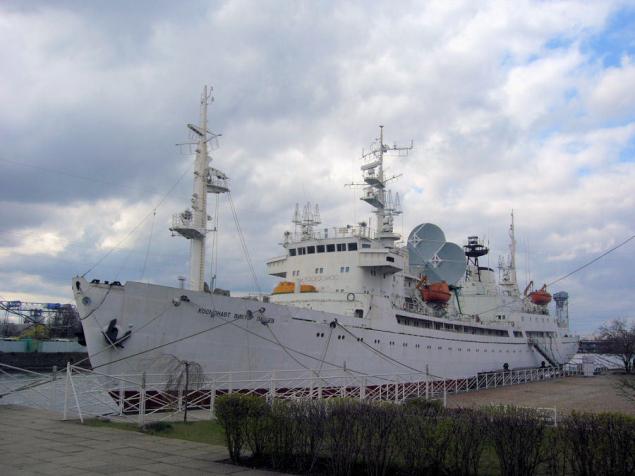
"Cosmonaut Viktor Patsaev" since 2001 is laid up at the dock Museum of the world ocean in Kaliningrad. Up to the present time performs the reception of telemetry data and communications with spacecraft, including the ISS. In July 2016 by order of the Minister of culture of the Russian ship entered in the unified state register of objects of cultural heritage of the peoples of Russia of Federal importance.
"Marshal Krylov", having gone through several repairs, is still in effect today.
What happened to the other ships? Some of them, of course, is outdated morally and physically. But most died because of the collapse of the Soviet Union. Officially some of the ships belonged to the Academy of Sciences of the USSR, and the service was in the black sea shipping company. After the collapse of the Union left the organization in different countries.
Since 1991, the Akademik Sergei Korolev" was in the port of Odessa, but in Ukraine at that time there was neither the space program nor the money to maintain such a ship. In 1996 it was sold for scrap. Ship "Cosmonaut Yuri Gagarin" suffered the same fate — the last flight was made in the port of Alang.
The rest of the ships stationed on the territory of Russia, waiting for the same fate. Reducing the cost of space has led to a sad ending. Attempts were made to rescue the court, they went to commercial flights, but all attempts were in vain. Since 1991, almost all vehicles are subject to periodic destruction by looters. With ships disappeared all that could be sold.
The last destination of the ships of the space fleet — Alang, the so-called "Beach of the dead", located 50 km from Bhavnagar, India. Alang is the world's largest area under section decommissioned for scrapping vessels. Here hundreds of cutting pads work every day from 20 000 to 40 000 poor. The average for the two months any ship disassembled for scrap completely, and only on this beach per year are emitted to die to a thousand vessels of all classes and types — and this is not a metaphor, the ships do at full speed rush to the shore.
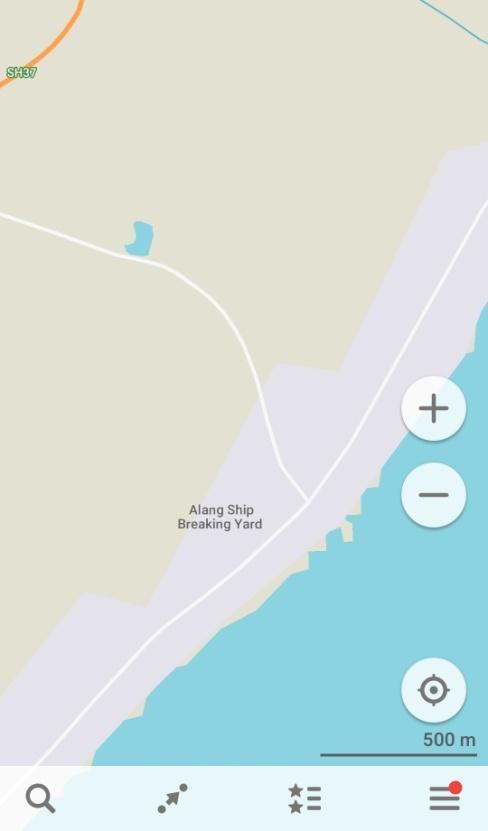
Here is dead space fleet of the USSR
New hope
Similar research ships now have with US (the last was commissioned in 2012), China and France.
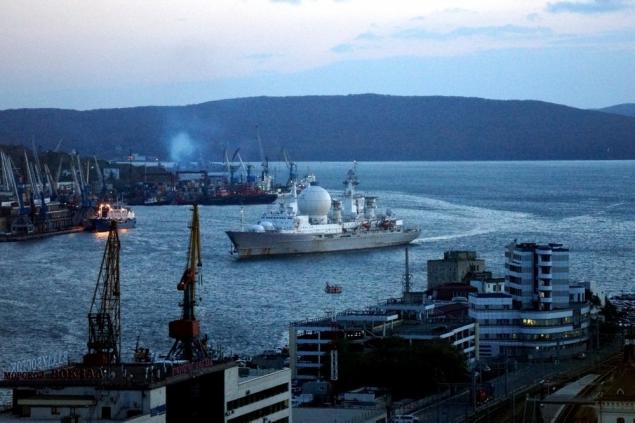
Source
"Marshal Krylov", built in 1987, remains the only one working at full capacity the ship measuring complex. The vehicle performs tasks to ensure flight tests new rocket and space technology — space vehicles, cruise missiles and ballistic missiles, rockets.
In November last year it became known that the Central design Bureau "iceberg" develops the project of the new ship measuring complex of the project "18290". No technical details were not reported. It is only known that the project work does not stop and continues to this day.
Sources:
Research vessel "Cosmonaut Georgy Dobrovolsky
Maritime space fleet
What became of the research vessel "Cosmonaut Yuri Gagarin"?
Source: geektimes.ru/company/mailru/blog/280132/
So the hair you have not used! 15 of the most unusual applications.
Japan will prepare a 3D map of all the highway



